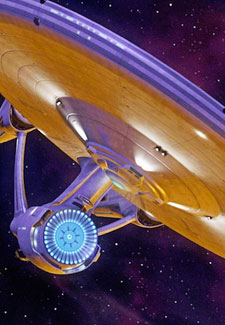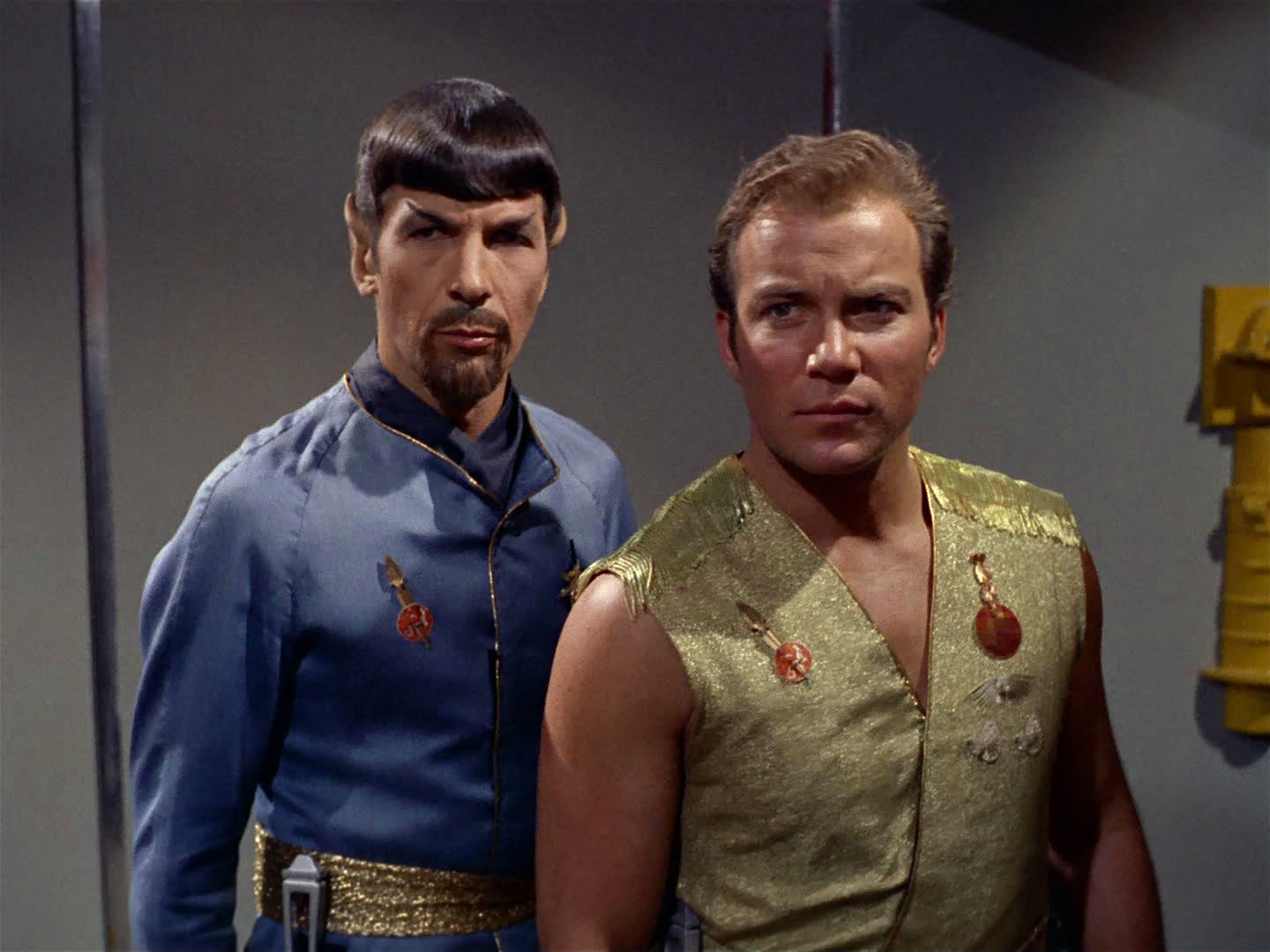Star Trek (Review): Star Dreck
A bloated, buggy, badly designed experience, ''Star Trek'' the game is a shameful failure

It isn’t as if the time not spent on graphics or bug-removal was put into gameplay, either. Star Trek is slow, glitchy and often infuriating. It is, in essence, a third-person cover shooter. Right from the start, that’s a risky move, as only a few games have successfully managed to master an easy cover system. Gears of War got it right first time, while Uncharted and Mass Effect both took two or three installments to find their groove. Star Trek, sadly, falls into the unsuccessful category. In theory, it should be simple — run towards any object and hold Circle (on PS3; it will vary for Xbox and PC), and your character will automatically crouch or roll or jump behind it. Highlight another area of cover and hold the button to automatically move to it. Easy, right? In practice, however, press that button and any number of things may happen. You could possibly move to the cover you wanted, or, you could simply move round the corner of where you are. Or stand up. Or roll. Or start walking away. Or move to a completely different area. It’s really anyone’s guess, and too often I found myself being peppered with phaser fire as I accidentally removed myself from cover. Combine it with slow controls, and it makes for an unpleasant playing experience.
The guns themselves are varied, with the trusty phaser combining with a mixture of Starfleet and alien weapons, each with its own primary and secondary abilities. The weapons themselves aren’t anything special, with most doing an adequate job of dispatching enemies, but the use of them brings another issue to the front.
If the main purpose of Starfleet officers, which the game constantly flashes on-screen during loading sequences, is to not use lethal force, then why is it so easy to kill enemies? I tried to play the game as I felt it should be, using the stun feature on my phaser before rushing in for a non-lethal takedown, but it became ridiculously laborious. Using stun exhausts the phaser’s reactor in two shots, making for a painfully slow experience as you work through a crowded room of enemies all gleefully trying to use lethal force on you. After a while I just went mad and spent the rest of the game gunning down anyone who so much as raised a gun, but it then left me feeling as though I was playing a generic shooter, not Star Trek. It’s a jolting removal from what Trek fans will be accustomed to.
Outside of gunplay, there are a few gameplay items that do actually work. Tricorders are used to scan the local environment, hacking doors and security terminals, scanning people, plants and technology to gain information and offer up little nuggets of detail — Trek nerds will love these, as I spent ages scouring each room to learn more about the different races, guns, structures and technologies being used in the game’s universe. It’s ripped straight from Arkham Asylum‘s detective mode, but it feels appropriate in Star Trek, as exploration is a key theme and the tricorder gives legitimate reason to explore each setting, seeking out fresh details. Each item found also grants experience points which can be used to upgrade the tricorder’s abilities, granting additional firepower or extra healing capabilities, for instance. That experience is gained by exploring and not by killing others somewhat redeems the gung-ho attitude of shooting sections. Aside from exploration, there is lots of hacking in Star Trek. Doors, turrets, computers, fire extinguishers, lights, power grids — you name it, you’ll probably hack into it at some point over the course of the game. Each time you do you’ll be faced with one of three minigames, each offered with no tutorial, and each proving, at first, to be a fun distraction. Unfortunately, they are used so often that any semblance of fun is soon eradicated, and they rapidly become a tiresome grind that pulls you from any action the main story creates.
One addition that actually enhances the game is multiplayer. As the game is primarily a two-person action adventure starring Spock and Kirk, the ability for two-player fun is included to allow for each player to control one half of the famous duo. It’s a lot of fun playing with a friend, zapping enemies, solving puzzles and doing the two-person actions the game AI often struggles to complete in single-player. Of course, the same bugs, graphical atrocities and weak gameplay are all there — except now you can mock them with a friend.
So it sounds great, looks bad, and plays poorly. What’s left in Star Trek?
The story. At the end of the day, it’s pretty good. It’s standard Star Trek fare for the most part — powerful enemy seeking to rule the galaxy, experiments gone wrong, political intrigue — but it’s compelling nonetheless. It creates some truly dramatic moments, such as space-diving down a Starbase as it explodes, or flying through crumbling canyons as enemies shoot at you. There’s even an epic space battle between the Enterprise and an alien armada — though even this can’t escape the ruinous hand of the gameplay department, being transformed from what could have potentially been an incredible opportunity to captain the Enterprise in combat into an on-rails shooter that has zero excitement and suffers from the same low-detail graphics as the rest of the game.
And really, that’s the main flaw of Star Trek. It never lives up to the potential of the world that’s been crafted for it. A powerful alien race should lead to incredible firefights, but they instead become laborious chores. Multiple worlds should lead to dense exploration as you learn more about the places you’ve entered, but you’ll instead find yourself wishing you were back on the Enterprise. Epic set pieces are laid before you, offering up suitably dramatic moments, but are then ruined with bugs, control glitches and gameplay annoyances. It’s compromise after missed opportunity after compromise. A game set in such a richly detailed universe, with the backstory, canon, and fan expectation should not be this mediocre, this generic. If it weren’t a Star Trek game, and lacked the excellent cast, it could just be another sub-par alien shooter.
What really makes Star Trek such a bad game, however, is that it feels like it really could have been something great. If the developers had stripped it back, cut off the fat, buffed the graphics, ironed out the bugs, fixed the gameplay and removed the minigames, it could have been completely different. What if I could have actually controlled the Enterprise during the space battles? What if the sky-diving and space-walk sections hadn’t had such terrible controls? What if I didn’t have to engage in such repetitive gunplay? What if there was no stupid cover-based gameplay system? What if there were more exploration, more character development, more interaction with other races? What if, what if, what if? I shouldn’t be playing a game and wondering what it could have been. I should be playing a game and thinking ”This is as great as it can be.” Mass Effect proved that space exploration and gunplay could be mixed with incredible storytelling, deep backstory and beautiful graphics. It did all that in 2007. Why don’t we have it here?
Star Trek is a bitter disappointment, a shameful cash cow, hulking its bloated carcass onto the scene in time for the release of the movie that the game’s lazy ending tries to segue into. It’s a half-assed, annoying, unfair experiment in testing how far fans will go to get more Trek in their lives. Paramount need to give Star Trek to a studio who gives a damn about what they’re doing, so that fan can finally realize their dreams of stepping into the shoes of a Starfleet officer. All this Star Trek game does is force players to step into a turd.
Support Metro Weekly’s Journalism
These are challenging times for news organizations. And yet it’s crucial we stay active and provide vital resources and information to both our local readers and the world. So won’t you please take a moment and consider supporting Metro Weekly with a membership? For as little as $5 a month, you can help ensure Metro Weekly magazine and MetroWeekly.com remain free, viable resources as we provide the best, most diverse, culturally-resonant LGBTQ coverage in both the D.C. region and around the world. Memberships come with exclusive perks and discounts, your own personal digital delivery of each week’s magazine (and an archive), access to our Member's Lounge when it launches this fall, and exclusive members-only items like Metro Weekly Membership Mugs and Tote Bags! Check out all our membership levels here and please join us today!
























